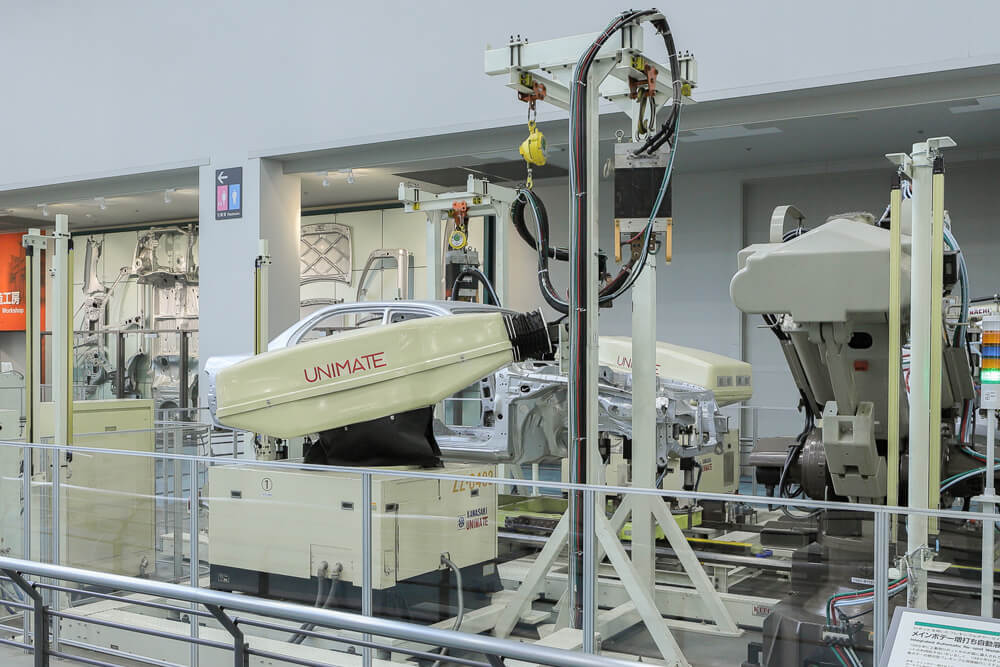Body Welding in the 1970s: Robots Improve Product Quality and Alleviate Labor Shortages
The development of industrial welding robots was extremely difficult due to a lack of high-output motors, but the hydraulic robotic arms introduced in 1962 finally proved production worthy, and began to spread among American factories. As Japan entered a phase of rapid economic growth in the second half of the 1960s, Toyota faced a surge in car demand amid a serious labor shortage. Adoption of robots began to be discussed seriously within the company, leading to their introduction in 1971. Toyota accelerated the adoption of robots after the Second Oil Crisis in 1979, until most of its welding lines were automated to achieve remarkable improvements in workplace safety, production efficiency, and uniformity in weld quality. The robotic arm’s range of motion was rather limited at the time, however, which diminished its capability to produce multiple models.
